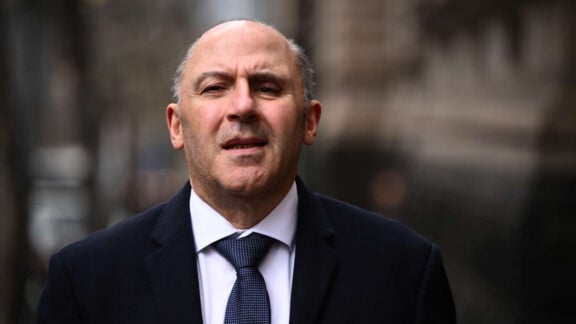Inflation may have lost some of its sting but it’s still high enough to have the Albanese government walking a thin budget line.
After hitting a likely peak of 7.8 per cent in the December quarter, inflation as measured by the consumer price index is now on its way down.
But at seven per cent, it’s still uncomfortably high and putting the federal government in the tricky position of wanting to provide some cost-of-living relief to vulnerable households without fanning the inflation fire.
Treasurer Jim Chalmers will announce a slim $4 billion surplus forecast on Tuesday night, along with smaller deficits over the next few years.
“This will be the first budget surplus in 15 years, this wouldn’t be possible without the disciplined approach that we have taken,” Dr Chalmers told reporters in Canberra.
“All the things we want to do for our people, for their opportunities and their future, is built on getting the budget into much better nick,” he said.
“A stronger budget position is not an end in itself. It’s the foundation on which we build everything that we want to do for our people, their economy and our society.”
Finance Minister and Minister for Women Katy Gallagher said the budget will build on last October’s for women’s equality.
“The PM, the treasurer and myself have said women have been front and centre of our budget decisions, and I think you’ll see that tonight,” she said.
Responding to criticism from the coalition that anyone could have delivered a surplus, Dr Chalmers said they had a crack, and failed nine times over the previous decade.
“Angus Taylor is not a serious person, he’s not making a serious contribution, and that’s why nobody takes him seriously,” he said.
The treasurer defended the almost $15 billion in cost-of-living relief contained in the May budget as carefully calibrated and targeted, saying it will have a minimal impact on inflation.
This has been queried by some economists, who argue any government funds that end up in people’s pockets leads to more spending and added inflationary pressure.
The budget will contain up-to-date forecasts for inflation and while they are yet to be revealed, the treasurer says it will come down faster and deliver a boost to real wages sooner.
While wages have been lifting relatively quickly, rising prices have eroded these gains and led to massive declines in real wages.
Updated employment figures leaked ahead of time also suggest the labour market is more resilient than predicted earlier.
Treasury now expects the unemployment rate to be 3.5 per cent in the June quarter of 2023 and 4.25 per cent in the June quarter of 2024 – an improvement of a quarter of a percentage point in both years.
Fresh economic growth forecasts will also be unveiled on Tuesday evening.
Based on the Reserve Bank’s latest economic forecasts, the economy is looking weaker than thought earlier, with growth of just 1.25 per cent expected over the year to December.
As well as inflation, the federal government is also looking to repair the budget position.
Thanks to higher commodity prices, economy-wide inflation and strength in the labour market, the government is on track to deliver its first surplus in 15 years.
Shadow treasurer Angus Taylor said a “drover’s dog” could have delivered a surplus with record revenue flooding in.
“Labor should focus on not just delivering one surplus but maintaining it over the forward estimates as well,” he said.
“The only way this government can do that is by putting the interests of Australians first and resisting traditional Labor principles of higher taxes and higher spending.”
Source: AAP









